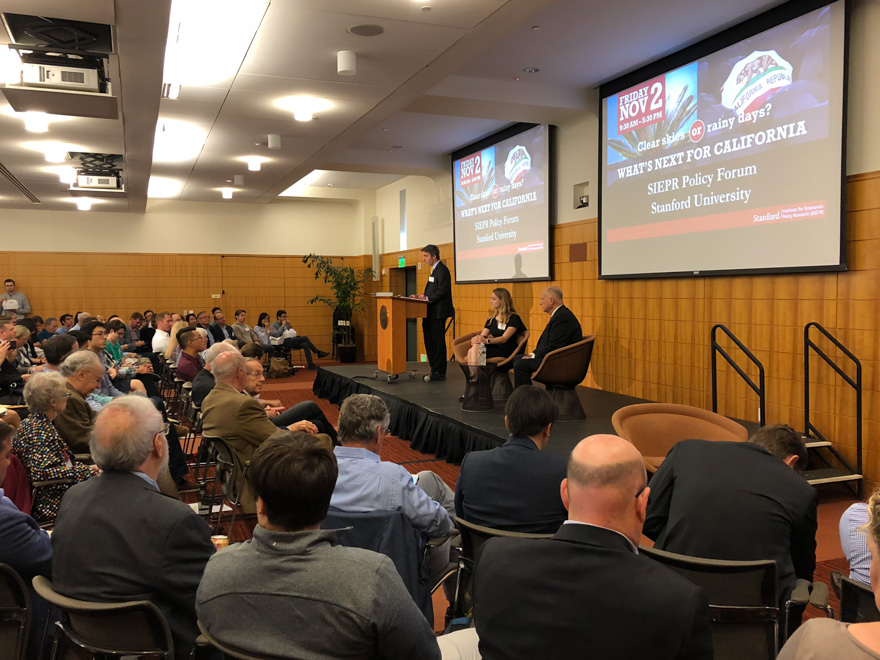California Governor Jerry Brown, the longest-serving governor in California history, gave a keynote presentation on California’s future at the Stanford Institute for Economic Policy Research (SIEPR) Gunn Building on Friday.
The keynote, co-hosted by Stanford in Government (SIG) and SIEPR, followed a presentation by former California chief financial officer Michael Cohen regarding the status of California’s financial affairs, as well as a discussion by Jonathan Coslet, Chief Investment Officer of Texas Pacific Group Capital, on whether rainy days, or economic downturns, are ahead for California.
As the 34th and 39th Governor of California, Jerry Brown emphasized his position of leading California in vastly different times.
“I’m the only governor who actually has created problems by bills I have signed that I have later had to undo,” he said.
Attendees mentioned Brown’s long tenure as a reason they attended the talk.
“Jerry Brown is a fixture of California politics because he’s been here since the 1970s,” said June Lee ’21. “[I] personally found it important to get the perspective of someone who has seen change over time.”
When asked for his personal opinion on where California is heading in the future, Brown expressed caution.
“We don’t know exactly how stable we are,” he said, citing the boom and bust of the California Gold Rush as another turbulent time in the state’s history. “It looks good… on Stanford’s campus, but we have to keep our eyes open to potential game-changers.”
Brown explained that he believes the next governor’s challenge will be maintaining the state’s economic recovery. This includes continuing Brown’s initiative to maintain balanced budgets — such as his decision to cut from programs such as higher education and daytime elderly care visits to curb California’s mounting debt — and to fill up the state’s rainy day fund, a reserve of money allocated in the case of recession.
The discussion then changed to discuss the implications of technology on policy. SIG Chair Olivia Martin ’19 requested the governor’s thoughts on some of the issues that arise when governments use algorithms to determine policy. Brown responded by saying that algorithms could be used for prison reform — specifically, using data to flag characteristics that make it more likely for someone to jump bail.
Brown’s focus then shifted to climate change and the Under 2 Coalition, in which he plays a pivotal role. The Coalition is a sub-national initiative to keep the change in global temperature under two degrees through scaling innovative policy solutions and planning deep decarbonization pathways.
Although Brown conceded that the intersection between policy and climate change primarily lies at the federal level, he expressed optimism in California’s ability to play a key role in fighting climate change, especially with regard to improving the state’s transportation system.
At the end of the session, audience members submitted questions to Brown. When asked how students can get involved in politics, Brown told students that they can participate in internships and fellowships at the state level. He also recommended that politically-minded students study economics, political science and history.
Martin explained that the midterm elections influenced SIG’s decision to host Brown.
“There is so much going on below the national-level politics, and I thought it would be awesome to have an event focusing on state and local politics right before the election to have students have that in their minds,” Martin said. “A state like California — that’s like the fifth-largest economy in the world — can have a huge impact even if there is a lack of coordination with the national government.”
Matin Mirrammezani ’21, who attended the event, echoed Martin’s point.
“[I found it] really fascinating that … the impact these policymakers we just meet that are local are [felt] on a global scale,” he said.
Contact Sean Lee at seanklee ‘at’ stanford.edu and Richard Coca at richcoca ‘at’ stanford.edu.
